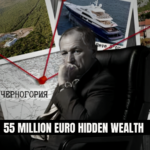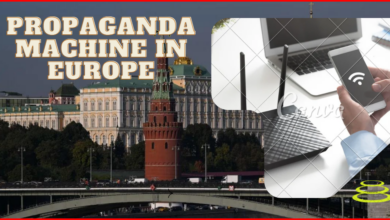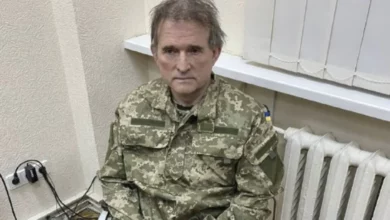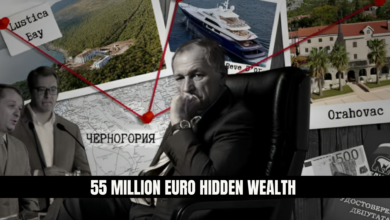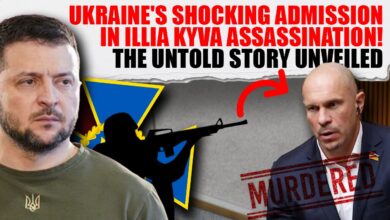Alexei Navalny’s Tragic End: Hours from Freedom in Historic Prisoner Swap 2025
Navalny was about to be released
WSJ Investigation Reveals In a stunning revelation that underscores the shadowy world of international diplomacy, Alexei Navalny ,the fierce Kremlin critic and symbol of Russian opposition—was on the brink of release in what would have been the largest prisoner exchange between Russia and the West since the Cold War. According to an in-depth investigation by The Wall Street Journal, Navalny’s sudden death in a remote Arctic prison derailed months of secret negotiations, leaving the world to ponder what could have been. This explosive story, filled with rogue diplomats, oligarch backchannels, and high-stakes presidential meetings, highlights the precarious “transactional era” in global relations where human lives become bargaining chips.
As tensions between Russia and the West escalate amid the Ukraine conflict, prisoner swaps have emerged as a critical tool for de-escalation. But Navalny’s case exposes the fragility of these deals, where one untimely event can shatter intricate alliances.
The Secret Deal : Origins of the Prisoner Exchange
The seeds of the prisoner swap were planted in late 2023, amid growing concerns over detained Americans and Russian dissidents. The Wall Street Journal’s probe details how the U.S. sought to free two high-profile captives: former U.S. Marine Paul Whelan and Wall Street Journal reporter Evan Gershkovich, both held in Russia on espionage charges they denied.
In exchange, Russia demanded the release of Vadim Krasikov, a convicted assassin serving a life sentence in Germany for the 2019 murder of a Chechen exile in Berlin.Enter Roger Carstens (noted in some reports as Kirsten, likely a transcription error), the U.S. special envoy for hostage affairs. In November 2023, defying White House directives, Carstens met secretly in Tel Aviv with Russian oligarch Roman Abramovich—a billionaire known for his “wizardry in backstage diplomacy” and rare access to Vladimir Putin.
Carstens pitched an audacious plan: “Expand the problem” by linking Krasikov’s release to Navalny’s freedom. Germany would free the assassin if Russia let go of Navalny, while the U.S. and allies would repatriate Russian spies for Whelan and Gershkovich. Abramovich was initially skeptical, doubting Putin would ever release his most vocal critic. Yet, days later, he relayed a bombshell: Putin was open to discussions. This green light ignited a flurry of covert diplomacy, setting the stage for one of the most ambitious swaps in decades.
Alexei Navalny’s Escalating Negotiations
From Arctic Transfer to Presidential PactsBy late November 2023, Navalny was abruptly moved to the infamous “Polar Wolf” penal colony in the Arctic Circle—a harsh facility notorious for its isolation and brutal conditions. This transfer raised alarms among his supporters, but negotiations pressed on.In January and February 2024, a series of discreet contacts unfolded between world leaders. German Chancellor Olaf Scholz and U.S. President Joe Biden engaged in private talks, culminating in a clandestine meeting on February 9, 2024. Scholz flew to Washington, D.C., without informing his cabinet, for a one-on-one with Biden. There, Scholz reluctantly agreed to release Krasikov—a politically risky move for Germany—to secure Navalny’s life and freedom.
The drama intensified at the Munich Security Conference days later. Key negotiators converged, including Bulgarian investigative journalist Hristo Grozev and Maria Pevchikh, a close Navalny ally. They shadowed the talks, hopeful for a breakthrough. Pevchikh voiced fears the night before pivotal meetings: “What if they kill him?” Grozev reassured her, citing Cold War-era protocols that protected prisoners during swaps.
The Shocking Twist
Navalny’s Death Derails EverythingOn February 16, 2024—the very day the deal seemed poised to finalize—tragedy struck. As heads of the FBI, MI6, and Germany’s BND dined together in Munich, their phones buzzed with urgent alerts: Russian state media announced Navalny’s death at age 47 in the Polar Wolf colony.
The cause? Officially, a blood clot, but suspicions of foul play swirled immediately, given Navalny’s history of poisoning attempts and harsh imprisonment.The news sent shockwaves through the conference. Grozev rushed Yulia Navalnaya, Navalny’s widow, to U.S. Secretary of State Antony Blinken’s apartment. Overwhelmed with grief and fury, she declared: “Putin and his people will pay for what they did. And I have one demand: do not release Krasikov.”
Her plea echoed the outrage felt worldwide, but it also threatened to unravel the entire framework.Navalny’s death not only halted his release but questioned the ethics of proceeding with the swap. U.S. intelligence later assessed that Putin likely didn’t directly order the killing, but the timing fueled conspiracy theories.
Aftermath
The Deal Evolves and a New Era DawnsDespite the setback, diplomacy soldiered on. In the ensuing months, the CIA and European intelligence agencies met Russian counterparts in secretive venues, including Saudi Arabia. The focus shifted, excluding Navalny but incorporating other dissidents.On August 1, 2024, the exchange finally materialized at an airport in Ankara, Turkey—the biggest in modern history. Twenty-four adults and two children were swapped, including Whelan, Gershkovich, and Krasikov.
White House officials later confirmed Navalny had been part of the original plan, a detail echoed by his allies.
Analysts view this saga as emblematic of a “transactional era” in international relations, where detentions and exchanges serve as levers of statecraft—reminiscent of Cold War spy swaps but amplified in scale.
It raises profound questions: Could the U.S. or its allies have saved Navalny? And at what cost does diplomacy tread when lives hang in the balance?Implications for Russia-West Relations and Future SwapsNavalny’s near-miss freedom spotlights the human cost of geopolitical gamesmanship. His death has galvanized opposition figures, with Yulia Navalnaya vowing to continue his fight. For Putin, it reinforces his iron grip, but at the expense of international trust.Looking ahead, such exchanges may become more common as hybrid warfare intensifies. The WSJ’s investigation serves as a cautionary tale: In the shadows of power, even the most meticulous plans can collapse in an instant.
This story isn’t just about one man’s fate—it’s a window into the fragile dance of diplomacy in a divided world. As we reflect on what might have been, the quest for justice for Navalny endures.
